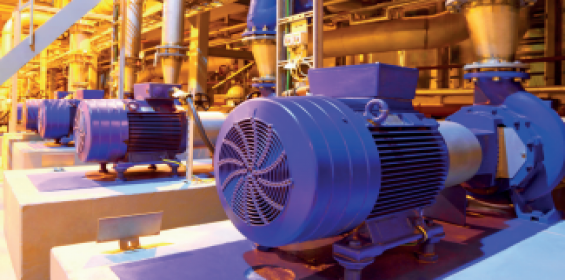The specific maintenance requirements of industrial pumps depend on several factors, including the type of pump, the clarity and viscosity of the pumped medium, the compliance requirements of the specific industry sector and more. However, what all industrial pump systems have in common is a need for regular maintenance, to minimise costly, inconvenient, and possibly hazardous unplanned downtime.
Take the dairy industry as an example. If the pump seal in a UHT milk pasteuriser fails and a maintenance engineer cannot repair it quickly, the entire production batch will be destined for the bin, with serious financial repercussions for the manufacturer. Now, imagine the same happening in a chemical processing plant where a pump is transporting hydrochloric acid for PH balancing — it’s easy to see that in this case, failures can lead to more than just financial losses. In both cases, a careful inspection of the sealings as part of a standard preventive maintenance programme could have identified the early signs of damage and avoided catastrophic failure.
Reversing the trend
Preventive maintenance entails any action aimed at spotting potential threats before they cause major damage. This can be achieved with periodic checks, the intervals of which must be established by a pump expert based on the application and pump type, or with 24/7 sensorbased condition monitoring. Maintenance managers must remember that, while sensors offer the chance to reliably monitor critical parameters such as vibration, power consumption, run time and output, visual inspection by a trained professional is still needed to assess the condition of assets such as bearings and sealings and detect misalignment issues.
The combination of both strategies allows pump owners to detect and address potential issues early on and extend the active lifespan of the overall system. For example, easy and cost-effective interventions such as replacing worn bearings and seals or removing debris that obstructs the correct flow can prevent unplanned downtime, save on future repairs and even minimise the pump’s energy consumption.
Yet, despite the clear advantages of preventive maintenance in terms of cost, improved efficiency and increased safety, from Houghton International’s experience, emergency repairs seem be to be the prevailing method of caring for pumps. To increase the reliability of industrial pumps, owners should take advantage of modern testing and condition monitoring systems, such as pump performance testing and vibration analysis.
Testing performance
A pump performance test can measure the efficiency of the overall pump system, defined as the ratio of the delivered water horsepower and the brake horsepower delivered to the pump shaft. In a pump performance test, the level of efficiency is represented by a curve that indicates how the pump works regarding pressure and flow.
One of the parameters measured by the test is the best efficiency point (BEP), which is the point on the curve that leads to the most efficient operation. Efficiency will be at zero when the discharge valve is closed and there is no flow. As the discharge valve opens and the flow increases, efficiency will increase too. It will then decrease again as the flow becomes more turbulent and congested. Somewhere between zero and excessive flow, there is a flow rate that leads to ideal efficiency — the BEP.
To be 100% efficient, the horsepower input should be the same as the water horsepower output. This is never the case, due to normal causes of energy loss such as friction and leakages. Therefore, a 75% efficiency rate is normally considered optimal, while 50% or lower indicates a potential issue.
Together with vibration readings, performance tests offer the most important insight into a pump’s health, and can be extremely useful in detecting problems before they lead to catastrophic failure.
Vibration analysis
Pumps produce vibrations that appear at specific frequencies across a wide spectrum. Pump spectral analysis examines these frequencies to identify problems such as misalignment and imbalance, which are responsible for up to 50% of pump failures. The analysis can also highlight flow pulsation, a bent or damaged shaft, bearings failure and cavitation.
For these reasons, vibration monitoring is a very effective way of preventing problems and reducing the pump’s total cost of ownership (TCO) in the long run. It can be performed as part of a scheduled maintenance appointment, or through smart sensors that continuously monitor the equipment and alert the pump owner if vibrations exceed an established threshold.
As a general rule of thumb, a vibration reading of one to two mm/sec is considered healthy and normal. Based on the type of pump, the specific application and the medium being pumped, a qualified technician can advise on the proper course of action when vibration exceeds this threshold.
Because of the many variables to consider, pump owners who opted for having a vibration sensor installed should discuss with a trained professional what a heathy vibration range should look like in their system, and not be tempted to simply increase the threshold when the sensors flag up an issue. Interpreting vibration readings may require specialist tools and a trained eye. For this reason, pump owners may want to consider getting help from a third party that specialises in the maintenance and repairs of pumps and their ancillary equipment.
In critical equipment such as industrial pumps, seemingly minor issues can quickly turn into major headaches. By taking a preventive approach to pump maintenance with specialist assessments, pump owners can ensure their operations keep flowing. *
Brian Tait is head of pump services at electromechanical specialist Houghton International
https://twitter.com/houghtonint
https://www.linkedin.com/company/houghton-international-electrical-services-ltd/

